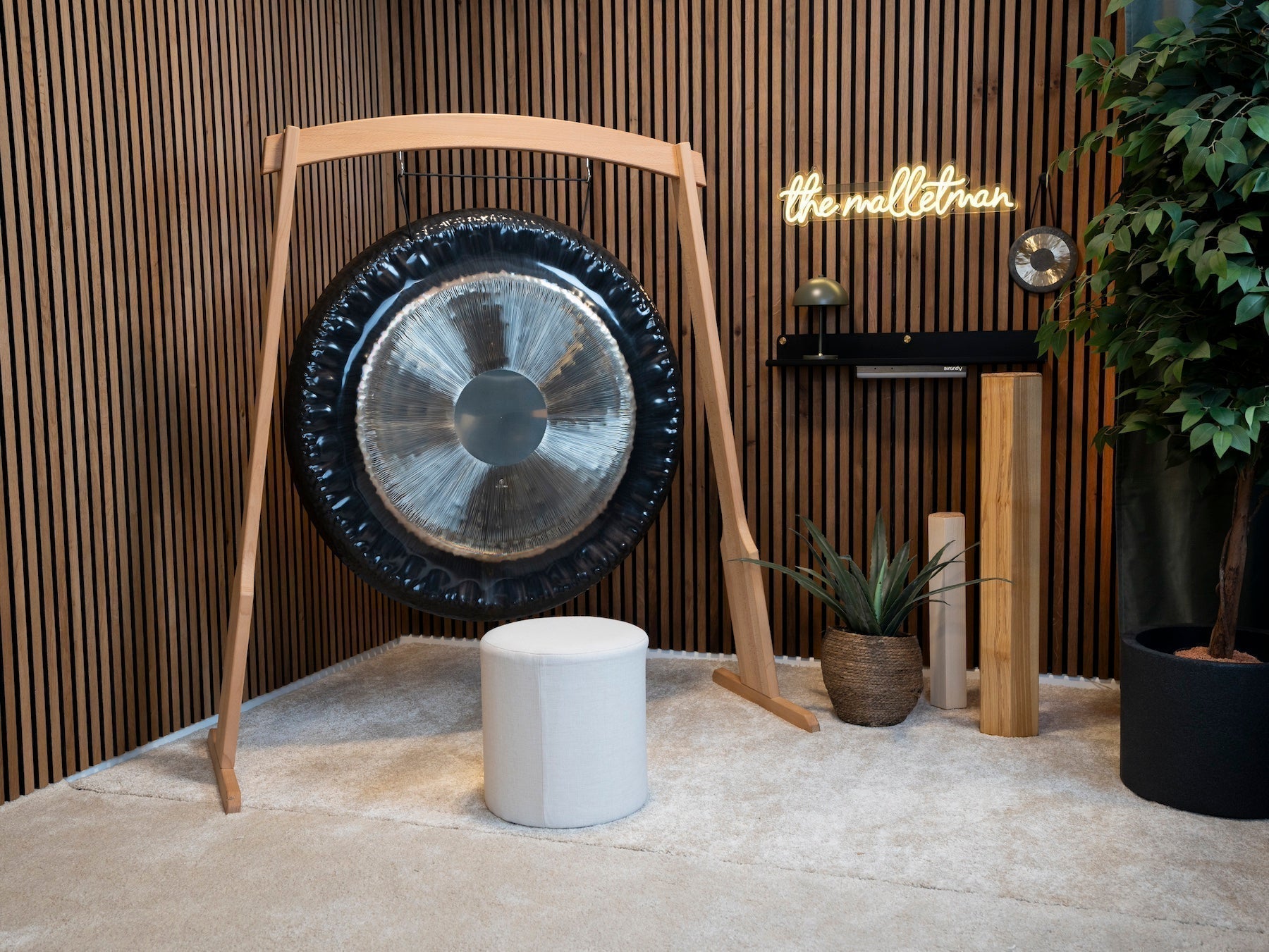Do you know the feeling of inner tension or restlessness? Do you sometimes feel that your thoughts are spinning faster and faster or are constantly repeating themselves? Many people experience inner restlessness or anxiety - some only rarely, others very regularly. The body and mind are under constant stress and thoughts seem to race like crazy - escaping this state is anything but easy for some people.
This makes it all the more important that you discover resources and methods that help you to center yourself again and find your balance. A simple, powerful method for finding yourself again is breathing meditation with the gong.
Why does inner restlessness and anxiety arise?
Uncertainties, fears about the future or past traumatic experiences - we usually experience inner restlessness and anxiety as a reaction to a situation in our lives that we perceive as stressful or threatening. The body reacts to such situations with an increased release of stress hormones such as adrenaline, which can manifest itself in symptoms such as palpitations, sweating or trembling. The feeling of not being able to control situations or the feeling of being overwhelmed can also lead to inner restlessness and anxiety.
How we assess a certain situation or event and what impact it has on us varies from person to person. Factors such as our own personality or current emotional and physical state influence whether something triggers inner turmoil or fear in us - or whether we can deal with it calmly and calmly.
Why sound in combination with breathing meditation helps so well with inner restlessness and anxiety
Sounds and breathing have a direct effect on our autonomic nervous system - the part of our body that unconsciously controls breathing, heartbeat and relaxation. If you are constantly tense and tense, sounds can help to gently regulate your nervous system and lead you back to a state of inner balance. In particular, the deep, strongly vibrating sounds of a gong flow through your entire being and bring it into resonance. The brain reacts by slowing down the brain waves and your thoughts fade into the background. This allows you to mindfully release tension - without any pressure.
Breathing meditation with sound
Preparation
- Find a comfortable, seated position.
- If you use a gong, position yourself so that you can easily strike it. Alternatively, you can also use a singing bowl, such as the Peter Hess® Universal Bowl, or perform the breathing meditation without any sound at all.
- To begin, breathe in and out deeply and slowly through your nose several times.
Your heart room
- Take your Gong Mallet in your practiced hand and place your other hand gently on your chest, over your heart. Feel how your breath flows under your hand into your chest.
- Breathe in deeply through your nose and fill your entire heart space with your breath - breathe out through your nose and feel how emptiness arises again. With each breath, explore how your ribs expand in all directions and how your heartbeat slows down.
- Now gently strike your gong once on the outer edge.
Notice how the vibrations of the gong flow through your heart space as you breathe in. - Stay with this image and continue the breathing exercise about five times. When the gong sounds, strike it again.
Your solar plexus
- Then place your hand a little lower, between your ribcage and belly button and breathe gently through your nose into this area
Imagine how your breath spreads out in this area and brings lightness and expansiveness. - With the next breath, strike your gong in the middle ring - let the sounds also affect your solar plexus while you continue to create space with the inhalation and let thoughts pass by with the exhalation.
- Repeat this for about five breaths and continue to consciously focus on this area.
Tip: Touching your hand to the relevant area can help you to find your focus more easily and breathe into this particular part of your body. In addition, this touch makes it easier to strengthen your body awareness and circular thoughts recede into the background.
Your lower abdomen
- Position your hand at the bottom of your stomach.
- Now send your breath deep into your pelvis and explore the movement of your abdominal wall - it rises gently with each inhalation and sinks again when you exhale.
- Strike the gong again close to the center, as softly as possible, and let the sounds flow into your lower abdomen. If you lose yourself in thought, consciously feel the contact between your hand and your abdomen.
- Breathe in and out deeply in your lower abdomen about five times.
Conclusion
- Put your mallet to one side and now place both hands on your heart.
- Feel - how do you feel now? Send a few last deep breaths into your heart space.
- You can finish with a final gong strike - or linger in silence.
Breathing meditation can also be performed at any time without the gong - e.g. in everyday life when you feel inner restlessness or tension. The laying on of hands in combination with conscious breathing has a calming, centering and strengthening effect in itself.
Which gong is suitable for inner restlessness?
For this breathing meditation, we recommend a gently vibrating gong with a long resonance such as the ollihess Freya 36 inch gong. It produces a lively overtone chain and a warm, harmonizing sound spectrum that reaches deep inside without being overwhelming.
Which mallet suits this sound meditation?
The right choice of mallet is particularly important for meditative sound spaces. A high-quality mallet impresses with a fine sound without any disturbing striking noises. The ollihess professional gong mallet L355 is suitable for quiet, long-lasting sounds and you can use the professional gong mallet S186 for the mids and highs.
Tip: Start your meditation with a single gentle strike and let the gong fade out completely before striking it again. This creates a sound space that carries you.
Conclusion: Breathing meditation with sound for inner restlessness
If you suffer from inner restlessness or even anxiety, try a combination of breathing meditation and gong sounds. Just a few minutes a day can make a
big difference. Give yourself permission to calm down - with sound as your gentle companion.
Disclaimer: This content is intended for relaxation and self-care. It does not replace medical or therapeutic advice or treatment. In case of persistent complaints, please contact a medical or psychological specialist.




